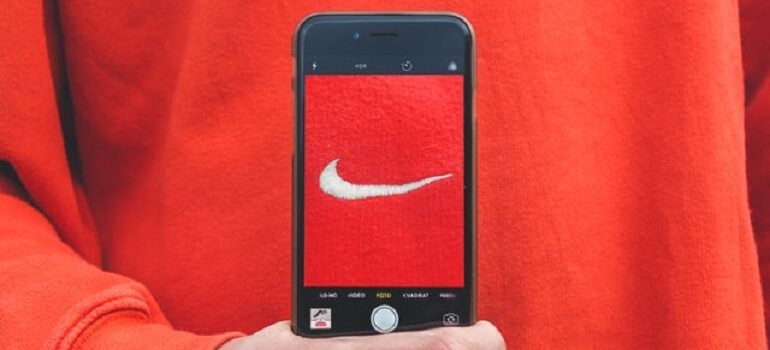If you have done casual research into branding, then you have invariably come across two terms: emotion-driven branding, and data-driven branding. You might, then, be wondering which of the two you should opt for when trying to build up your moving company’s brand. However, just what do the two terms actually mean? What are the advantages and disadvantages of the two approaches, and what do they require in order to work? Finally, is it really possible to choose between emotion-driven vs data-driven branding?
What is data-driven branding?
Data-driven marketing focuses entirely on collating a strategy based on the objective analysis of available data. You use this analysis as an insight into customer preferences as well as a way to predict future marketing and consumer trends and take advantage of them. However, this does have a drawback.
Namely, without enough data, your predictions will be somewhat unreliable. And the only way to gather data relevant to yourself is to either do a ton of research, without guaranteed returns or take the plunge and step into the market with an incomplete branding strategy. The former takes a lot of time, resources, and energy. The latter carries obvious risks since your entire venture might become untenable.
What is emotion-driven branding?

Emotion-driven marketing, on the other hand, is based on building up a brand that relies on customer loyalty. Through careful planning, you can make your brand resonate with the consumer’s desires, aspirations, and emotions. This means that instead of picking an objectively better brand, or one which is easier to contact, consumers would look for you instead. In moving company terms, it means that even if there is a local company that can do the move at a slightly lower price, customers would still prefer to entrust you with their belongings. Simply because you have cemented your image as reliable and customer-centric.
Of course, if comparing emotion-driven vs data-driven branding, this still has its disadvantages. Namely, if your message does not resonate with customers, then your brand will flop. And with how reliant this type of branding is on PR, if your image gets spoiled, you lose your customers.
Targeting the right audience
Naturally, be it emotion-driven vs data-driven branding, both rely on identifying and targeting a particular audience. The difference is that data-driven branding relies on hard facts to identify the best consumer base for a product or service. It then focuses on them, even to the exclusion of other groups. Emotion-driven branding, on the other hand, can potentially have a slightly wider audience.
After all, if you appeal to someone’s sense of family, then that will resonate with more people than trying to peddle the latest model of phone to a particular generation. For movers, the same logic applies. You can try and establish yourself as a family brand, or you can appeal to a particular group of people, for example promoting yourself as the best movers for businesses and then give objective arguments why. Naturally, both rely on digital marketing for movers and similar practices.
The message you want to send

Naturally, every brand needs to have a strong message that communicates its quality and appeal. While emotion and data-driven branding need this feature, just like either would require proper moving company SEO when doing online marketing, the approach is starkly different. We had hinted at it, but data-driven branding is almost scientific in its approach. You need to openly and carefully list out your qualifications and reasons why you are the best possible choice for the customer.
For example, you can list your number of successful moves, offer reviews that back up your point, etc. You need to appeal to the customer’s logical side in order to win them over. On the other hand, emotion-driven branding is all about getting your customers to forge a connection with you, and therefore focuses more on the narrative. You can promote how long you’ve been part of the local community or your values.
Strong branding

Of course, even if discussing emotion-driven vs data-driven branding, there are some commonalities that cannot be avoided. They can, in fact, be treated more or less the same for both approaches to branding. This refers to the fact that you need to have a strong basis for your brand in order for your efforts to be successful. This means having:
- A logo
- Recognizable font
- A unique color scheme
At the very least, you need these three things in order to start building up the image of your brand successfully. Naturally, your particular approach will dictate how such things should be designed. Another necessary branding tool is moving company website design. Sites are, nowadays, crucially important for the growth and recognition of a brand. So, be it emotional or data-driven branding, you must invest in one.
The needed combination
Of course, the discussion of emotion-driven vs data-driven branding has an inherent flaw. That is, both methods of branding work best when used together. You cannot effectively use emotion-driven branding without proper data. And you cannot form a basis for your business without leaning into emotion-driven branding at the start before you have enough facts and data to really make use of data-driven branding.
While working to build your personal brand, you can choose to prioritize one or the other. But you absolutely cannot refuse to use either of the two. If you do, you would be wasting a lot of resources pointlessly, not to mention missing out on the chance to maximize your appeal. Many customers cannot be swayed by emotion or reason alone. This in turn requires you to rely on a combination of both.
Final Comment
Now that you know more about emotion-driven vs data-driven branding, it should be obvious what you need to do. That is, try your best to take advantage of both approaches. You can, in fact, cherry-pick the best features of both and combine them. While this will admittedly take more time and effort, the results will be well worth it.






